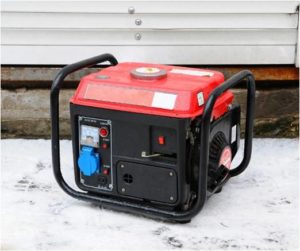
Choosing the right generator is the first step in generator safety. Here are a few easy ways to figure out which size generator is best for you, provided by Red Cross.
- Add up the power requirements of the appliances and devices you will want to use.
- Add up the wattage of all the light bulbs you will want to use.
- Find the total amps you need by dividing watts by volts.
- Choose a generator that produces more amps than you need. Some devices draw up to 3 times as much power when starting up, and others lose efficiency over times.
Another thing to remember when using a generator is that there are many hazards associated with using it. These hazards include but are not limited to:
- Shocks and electrocution
- Carbon monoxide
- Fires
- Noise and vibration
To minimize these hazards, keep your generator dry, and do not use it in rain or wet conditions. Also, keep the generator outside in a well-ventilated area to avoid carbon monoxide poisoning. Carbon monoxide can kill you in as little as 5 minutes and without warning.
Just a few more tips: Before refueling your generator be sure to turn off the generator and let it cool down to avoid a fire hazard. Store gas for your generator properly, not in your house, and in a ventilated building or under the cover of a car port or canopy. Avoid electrical hazards by keeping the generator dry and under a cover such as a car port or canopy, but only if it is at least 20 feet away from your house.
Neverman Insurance Agency – 27594 Detroit Rd Westlake, Ohio 44145 (440) 871-5620 www.nevermaninsurance.com
Sources: https://www.redcross.org/get-help/how-to-prepare-for-emergencies/types-of-emergencies/power-outage/safe-generator-use.html and https://www.osha.gov/OshDoc/data_Hurricane_Facts/portable_generator_safety.pdf.
